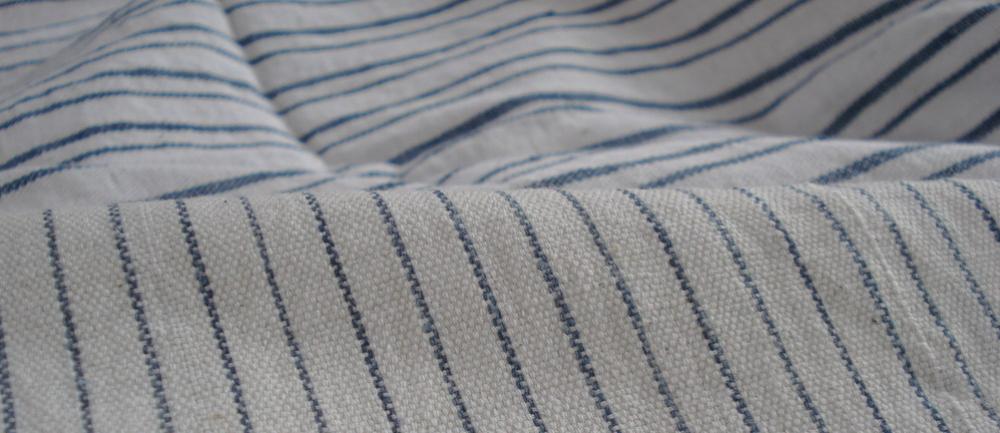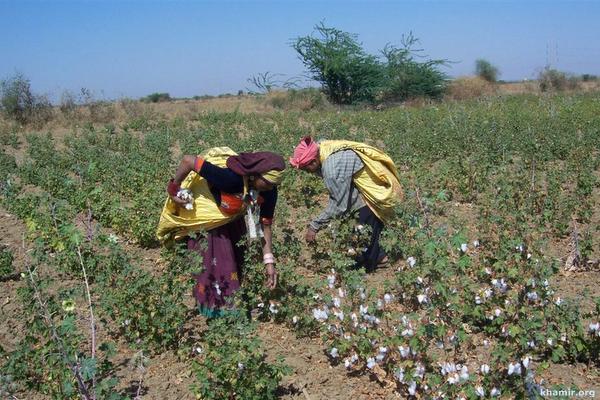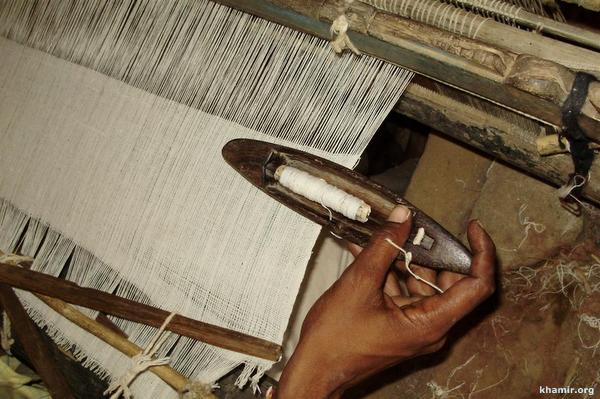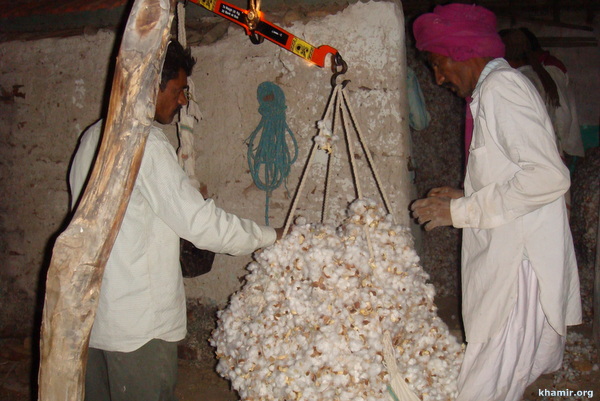Kala Cotton Initiative

Kala Cotton of Kachchh is the original pure Old World cotton of India. Khamir's Kala Cotton Initiative encourages sustainable cotton textile production, and the preservation of agricultural and artisan livelihoods in Kachchh.
Why Kala Cotton?
Kachchh has experienced rapid industrialisation since the 2001 earthquake. While the impact of big industry has its positives, it has adversely impacted cultural livelihoods and their endurance is now shrouded in uncertainty. The number of weavers in Kachchh has declined from over 2000 in the mid 1990s to only 600-700 in practice today. Small-scale weavers cannot buy raw materials in bulk, and face the greatest difficulties in integrating with changing markets. There was a clear need to develop a local value chain in order to insulate these weavers from external market fluctuations. To do this, a raw material was required that was locally grown, environmentally friendly, that had the potential to create social value.
|
Hand picking of Kala organic cotton from farms |
Kala cotton on loom - linking the farmer with weaver |
Kala cotton is indigenous to Kachchh and by default organic, as the farmers do not use any pesticides and synthetic fertilizers. It is a purely rain fed crop that has a high tolerance for both disease and pests, and requires minimal investment. It is both resilient and resurgent in the face of stressful land conditions.
|
Kala cotton bobbins |
Naturally dyed Kala cotton yarn |
Kala Cotton is one of the few genetically pure cotton species remaining in India, and one of the only species of pure, old world cottons to be cultivated today on a large scale. It forms a strong, coarse, stretchable fibre that is often used in denim. As it is difficult to produce fine quality textiles with it, as its short staple length translates to fewer twists per inch of yarn, over time its use has diminished significantly in mainstream markets.
About the Kala Cotton Initiative
Khamir began this initiative in 2007, by partnering with Satvik, an association of organic farmers in Kachchh, to explore the production possibilities for Kala Cotton.
|
Meeting facilitated by Satvik with Kala Cotton farmers to discuss pricing and production plan |
Kala cotton procurement directly from farmers at 15% premium over the market price |
As the cotton’s short staple length makes it difficult to spin and weave, Khamir and Satvik first consulted with many experts to develop a process for converting it into yarn. Additionally, local weavers had to be convinced of the value of Kala Cotton – a particular challenge since weaving it requires changes in the loom set-up, as well as differing yields and shafts. After years of experimentation and perfecting both spinning and weaving techniques, Khamir began producing its first Kala Cotton goods in 2010.
|
Kala Pod - the original pure Old World cotton of India |
The final product: organically grown, hand picked, hand spun, hand woven, naturally dyed |
Today, the Kala Cotton Initiative encourages sustainable cotton textile production in harmony with local ecology. The project aims to create a value chain at multiple levels by working with marginalized communities and promoting locally grown species. To implement this initiative, Khamir and Satvik have created a supply chain between the Kala Cotton farmers, ginners, spinners and weavers to convert the raw cotton into hand woven products. It is hoped that eventually, the Kala Cotton Initiative will serve as an example for other communities to replicate.









